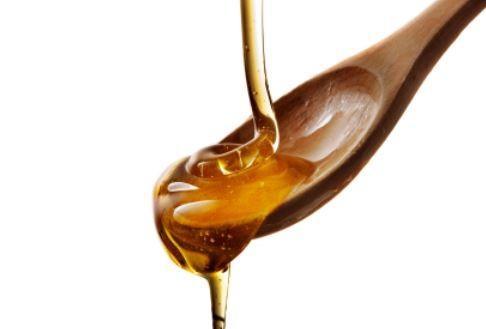If there is one fact that rings true in the nutrition world, it’s that all sugars are NOT created equal!
That is particularly true when you’re talking about fructose and glucose.
Fructose (fruit sugar) has gotten a bad rap because the highly processed version of it—high fructose corn syrup (HFCS)—has been associated with growing spare tires and muffin tops, fatty liver disease, diabetes and even heart disease!
But does that mean you should avoid fresh fruit, because it too contains fructose?
And how does glucose compare to fructose —are they both bad?
Here is what you need to know:
Glucose versus fructose—how do they differ?
Most of the carbohydrates you eat (including breads, pasta, vegetables, grains and to a lesser degree dairy) are converted to glucose upon digestion.
Every single cell in your body uses glucose for energy (especially your brain!), so most of what you consume is “burned up” (as long as you don’t overeat, that is!). Your liver only has to metabolize about 20 percent of the glucose you take in.
Fructose, on the other hand, is not used by your body for energy. 100 percent of the fructose you take in must be metabolized by your liver, so you can see the reason for the association between fatty liver disease and fructose consumption—your liver gets far more stressed with fructose than glucose.
Since it is not used as an energy source, fructose turns into fatty acids, very-low-density lipoprotein (VLDL) cholesterol, and triglycerides, which are then stored as fat.
Glucose makes you full, but fructose makes you overeat!
Glucose suppresses your hunger hormone ghrelin and stimulates the hormone leptin, which then suppresses your appetite. This is how your body responds to hunger and recognizes satiety.
Fructose, on the other hand, has no effect on your hunger hormones. So since your body doesn’t sense satiety, it’s very easy to overeat fructose…and pack on the pounds as a result.
In addition, the fatty acids created during fructose metabolism accumulate in your muscle tissues, triggering insulin resistance. As this worsens over time, eventually metabolic syndrome and type 2 diabetes may come knocking.
But should you avoid fresh fruit?
Although all fructose is metabolized the same way by your liver, when the source of your fructose is fresh fruit, you are getting fructose in its pure, natural form, and taking in FAR less than you would from products made with the highly processed HFCS.
For example, a medium apple contains 13 grams of natural fructose; a can of Coke has a whopping 39 grams, (3 times as much!) ALL in the form of HFCS.
See the difference?
Plus fresh fruit has many healthful components, including nutrients, fiber and natural water, so it’s not something you need to avoid. Just limit your consumption to about 15-20 grams of fructose a day.
Here is a chart that can guide you with making wise fruit choices:

Natural fructose vs. HFCS—there IS a difference!
It has long been suspected by many nutrition professionals (myself included) that all fructose is not created equal, and studies are starting to illustrate the different impacts on your health from natural fructose versus HFCS.
Research performed in November 2018 by the Clinical Nutrition and Risk Factor Modification Centre of St. Michael's Hospital in Toronto, Canada showed that natural fructose in the form of fresh fruit and fruit juice, when consumed in reasonable amounts and not to excess, did not have a harmful effect on blood sugar and insulin levels.
Plus the fruit’s fiber and nutrients were added healthy bonuses.
On the other hand, foods and drinks sweetened with HFCS had a definite harmful metabolic effect and raised the risk of insulin resistance and type 2 diabetes considerably.
And as if that’s not enough, HFCS is typically made with GE corn to boot, so you’re taking in cancer-causing glyphosate with every sip or bite.
So now what do you do?
The answer here is simple—it’s crucial to avoid HFCS as much as possible. Your life just may depend on it!
A good way to start is to stick to wholesome real foods. HFCS hides in most processed and fast foods, so by avoiding those, you inherently avoid HFCS.
The biggest offender here is soda. Soda is the #1 source of HFCS in existence, so do yourself a favor and stay far away from it. (And don’t you dare ask me if diet soda is any better. With diet soda you are merely trading one poison—HFCS—for another—aspartame or sucralose.)
If you need a fizzy fix while you’re giving up soda, have club soda with a splash of fresh lemon or lime, or even orange or cranberry juice.
And read labels carefully. Even seemingly innocent things like ketchup, barbecue sauce and salad dressing can contain HFCS.
Help your gut recover too
Your gut microbiome takes a major hit from high sugar consumption, especially HFCS.
Harmful yeasts and bacteria feed on sugar and can gain the “upper hand” over your beneficial bacteria, which in turn can weaken your immune system functioning as well as impact your digestion and nutrient absorption and spur the development of leaky gut.
But a top-notch full-spectrum probiotic like Super Shield multi-strain probiotic formula can help your gut recover from “sugar abuse.”
Super Shield’s effective blend of 13 potent probiotic strains can help bring your microbiome into a healthier balance, as well as support strong immune function, less gas and constipation and more regular BMs!
Now you know what you need to know about fructose! And if you’re ever in doubt about this or any other food issues, just remember that natural is always best and you can’t go wrong.
To your health,
Sherry Brescia












Hi June,
There can be about 3-6 grams of fructose in each 100 grams of watermelon. This is just an approximate amount, but we hope it helps!
How much fructose is there in watermelon. Thank you for the list of fruits that contain fructose and the quantity in each, very helpful.